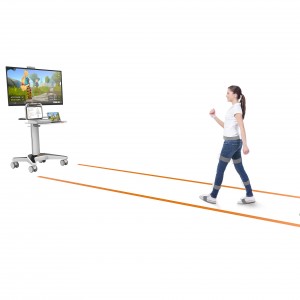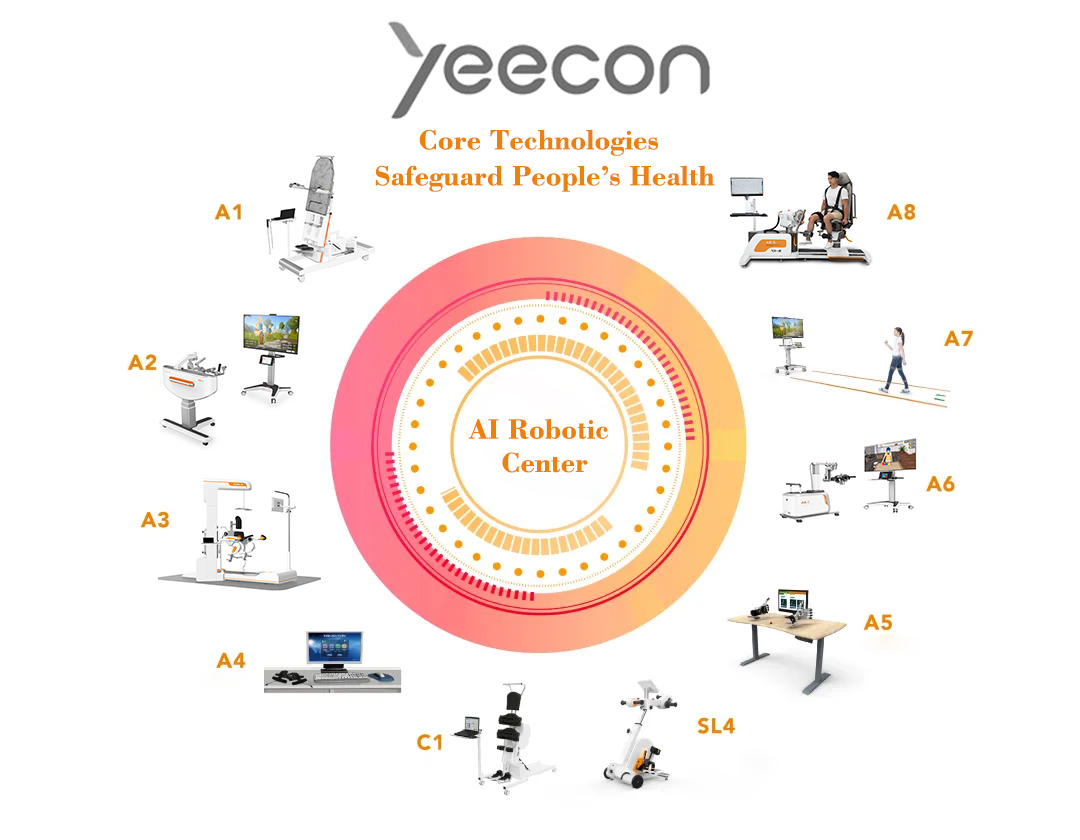Analysis of 12 Abnormal Gaits And Their Causes
1, Antalgic Gait
- Antalgic Gait is the posture the patient takes to avoid pain while walking.
- Often to protect injured areas such as feet, ankles, knees, hips, etc.
- At this time, the stance phase of the affected lower extremity is often shortened to prevent pain from bearing weight on the injured area. Therefore, it is better to compare the stance phase of the bilateral lower extremities.
- Reduced walking speed, that is, reduced pace per minute (normally 90-120 steps per minute).
- Observe if the hands are used to support the painful area.
2, Ataxic gait
- Abnormal gait caused by loss of muscle coordination
- This is a neurological sign that characterized by dysfunction of muscular autonomic movement, including gait abnormalities.. Ataxia is a nonspecific clinical manifestation of neurological dysfunction of coordinated movement (eg, cerebellar lesions).
- One of the common reasons is drunkenness
- The patient presents with an unbalanced gait, swaying, unsteady, and staggering while walking.
3, Arthrogenic Gait
- Stiffness of the knee and hip joint due to stiffness, laxity or deformation
- Joint lesions such as osteoarthritis, avascular necrosis of the femoral head, rheumatoid arthritis, etc.
- If there is hip or knee fusion, raise the pelvis on the affected side to avoid dragging the toes on the floor.
- Observe whether the patient elevates the entire lower extremity to avoid the toes touching the ground.
- Compare gait length of both sides
4, Trendelenbrug’s Gait
- Usually caused by weakness or paralysis of the gluteus medius.
- The load-bearing side of the hip protrudes, while the non-load-bearing side of the hip drops.
5, Lurching Gait
- Caused by gluteus maximus weakness or paralysis
- Hands drop, the thoracic spine on the affected side moves backwards, and the arms move forward, presenting a staggering posture
6, Parkinson’s Gait
- Short step length
- Wide base of support
- Shuffling
- A panicked gait is a typical walking posture of Parkinson’s patients. This is caused by insufficient dopamine in the basal ganglia, which leads to motor deficits. This gait is the most susceptible motor characteristic of the disease.
7, Psoas Claudication
- It is caused by iliopsoas spasm or iliopsoas bursa
- Movement limitation and abnormal atypical gait caused by pain
- Causes hip flexion, adduction, external rotation and mild flexion of the knee (These poses seem to reduce muscle tone, inflammation, and tension)
8, Scissors Gait
- One lower limb crosses in front of the other lower limb
- Caused by stiffness of the adductor femoris
- Scissor gait is related to muscle stiffness caused by cerebral palsy
9, Steppage Gait
- Weakness or paralysis of the anterior calf muscles
- Hip elevation on the affected side (to avoid toes dragging)
- Foot drop is seen when the heel lands during the stance phase
- The gait is caused by foot drop due to limited dorsiflexion of the foot. To prevent the toes from landing on the ground, the patient had to lift the lower extremity higher while walking.
10, Hemiplegic Gait
- Hemiplegia due to cerebrovascular accident
- Partial (unilateral) muscle stiffness or paralysis
- Can be seen in affected side: Shoulder internal rotation; elbow or wrist flexion; hip extension and adduction; knee extension; upper arm flexion, adduction, and internal rotation; ankle plantar flexion
11, Contracture
- Lower extremity contractures. Nerve or joint disease and deformities can lead to contractures (eg gastrocnemius contractures, knee spur formation, burns, etc.)
- Excessive braking time can also cause muscle contractures that affect gait, such as long-term wheelchair-bound.
- Strengthening and stretching the muscles of the respective joints can help prevent contractures.
12, Other factors that cause walking pain or abnormal gait:
- Whether the shoes fit well
- Sensory loss in the feet
- Paralysis
- Muscle weakness
- Joint fusion
- Joint replacement
- Calcaneus spur
- Bunion
- Joints inflammation
- Helosis
- Meniscus disease
- Ligament instability
- Flatfoot
- Leg length discrepancy
- Excessive lordosis of the lumbar spine
- Excessive thoracic kyphosis
- Direct injuries or trauma
In order to recognize and treat abnormal gait, gait analysis is the key. Gait analysis is a special branch of biomechanics. It conducts kinematic observation and kinetic analysis on the movement of limbs and joints while walking. It provides a series of values and curves of time, set, mechanical, and some other parameter. It uses electronic equipment to record the user’s walking gait data to provide clinical treatment basis and judgment. The 3D gait restoration function can reproduce the use’s gait and provide observers with views from walking in various directions and from various points in different times. Meanwhile, the report data that directly generated by the software can also be used to analyze the user’s gait.
Yeecon Gait Analysis System A7-2 is a perfect tool for this purpose. It is applicable to clinical gait analysis in rehabilitation, orthopedics, neurology, neurosurgery, brain stem, and other relevant departments of medical institutions.

Yeecon Gait Analysis System A7-2 is featured with the following functions:
1. Data playback: The data of a certain time can be replayed continuously in 3D mode, allowing users to observe the details of gait repeatedly. In addition, the function can also allow users to know the improvement after training.
2. Evaluation: It can evaluate the gait cycle, the displacement of the joints of the lower limbs, and the angle changes of the joints of lower limbs, which are presented to users through bar chart, curve chart, and strip chart.
3. Comparative analysis: It allows users to conduct comparative analysis before and after treatment, and allows users to perform comparative analysis with health data of similar people. Through comparison, users can intuitively analyze their gait.
4. 3D view: It provides left view, top view, back view and free view, users can drag and drop the view to see the specific joint situation.
5. Four training modes with visual feedback: Decomposition movement training, continuous movement training, walking training and motion control training.
Yeecon has been a keen manufacturer of rehabilitation equipment since 2000. We develop and manufacture various kinds of rehab equipment such as physiotherapy equipment and rehabilitation robotics. We have a comprehensive and scientific product portfolio that covers the whole cycle of rehabilitation. We also provide holistic rehabilitation center construction solutions. If you are interested in cooperating with us. Please feel free to leave us a message or send us email at: yikangexporttrade@163.com.

Read more:
Something You Should Know about Gait Analysis System
Deweighting System for Anti-Weight-Bearing Walking Training
Effective Robotic Rehabilitation Equipment for Lower Limb Dysfunction
Post time: Mar-16-2022






